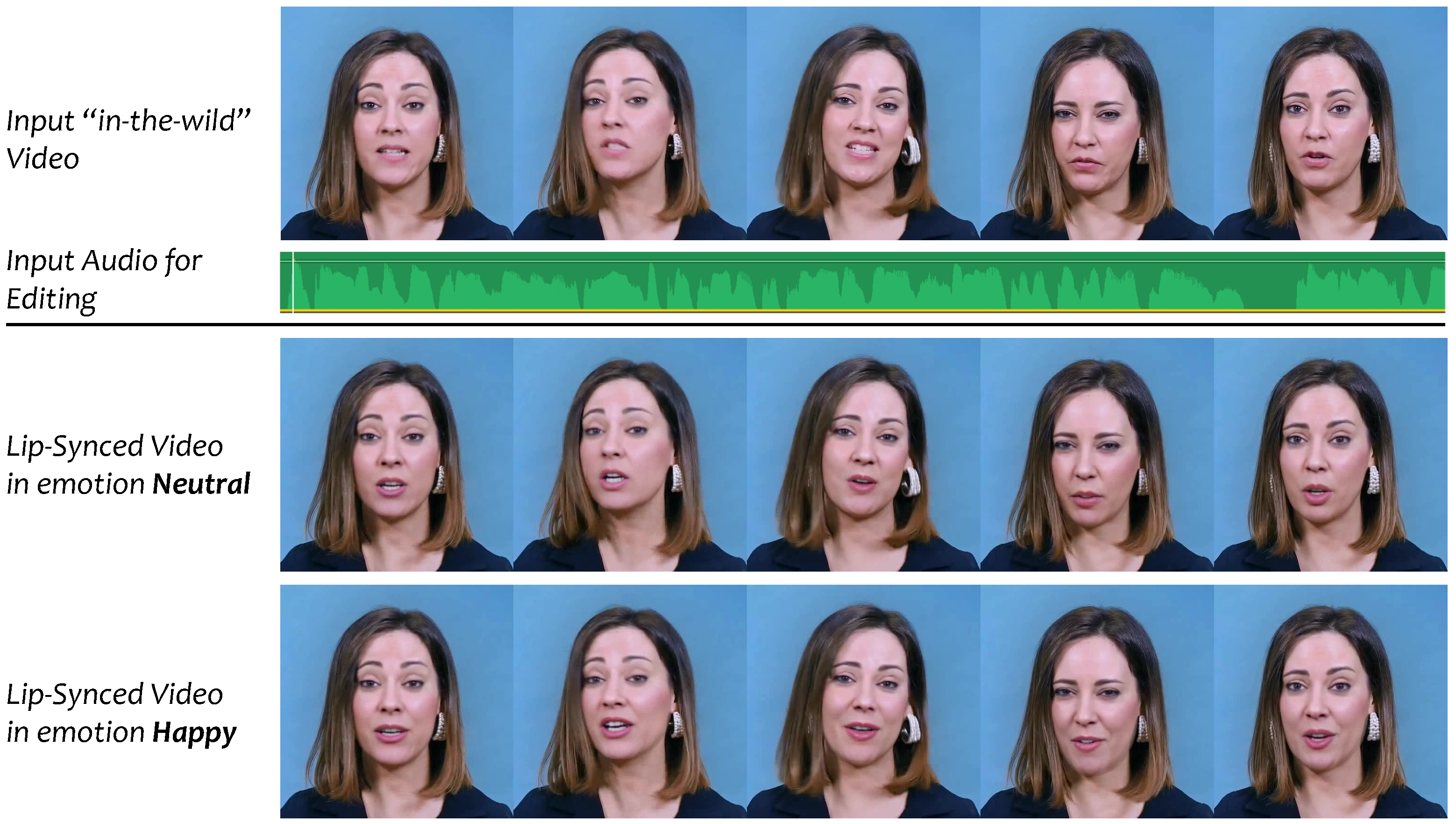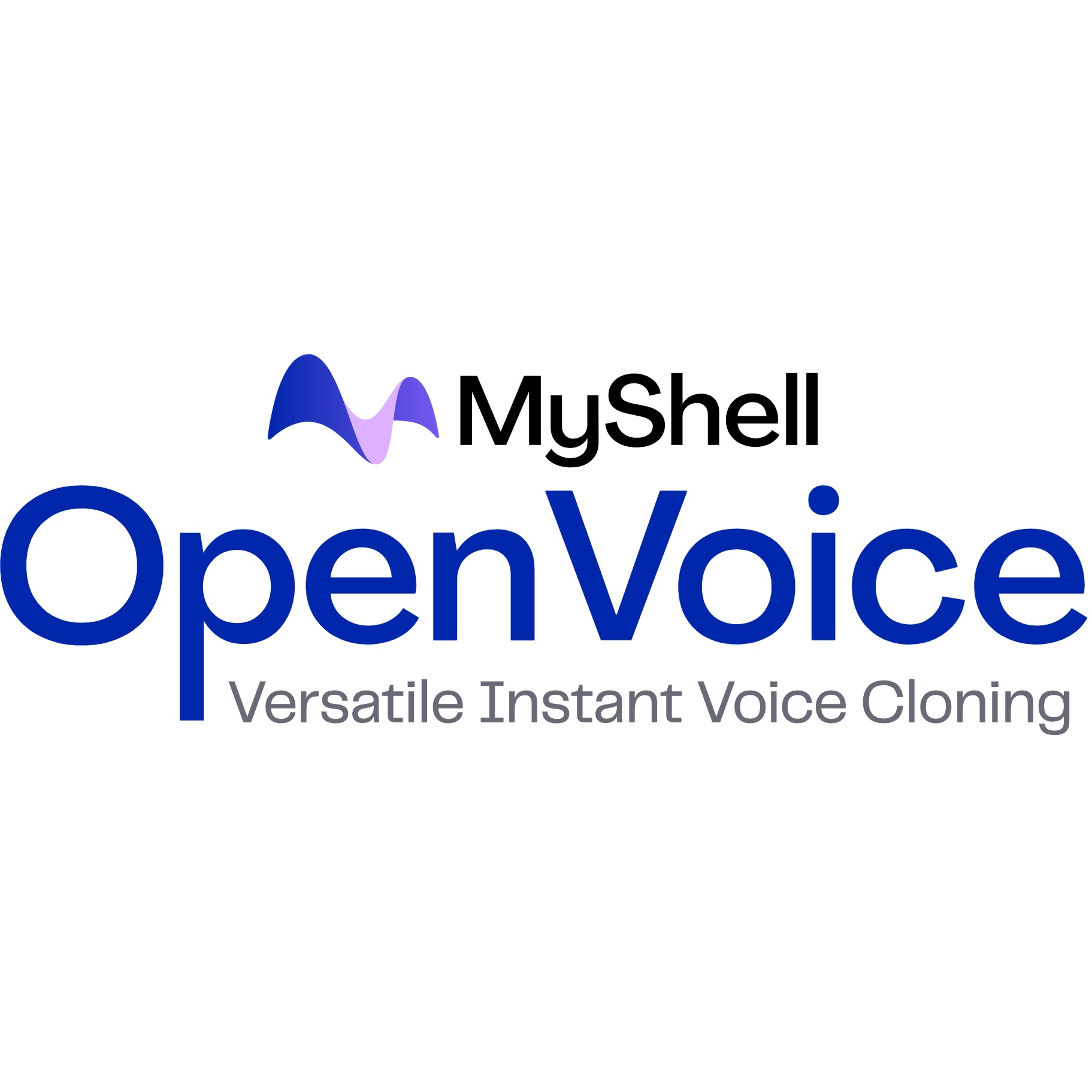video-retalking
Maintainer: chenxwh

71

| Property | Value |
|---|---|
| Run this model | Run on Replicate |
| API spec | View on Replicate |
| Github link | View on Github |
| Paper link | View on Arxiv |
Create account to get full access
Model overview
The video-retalking model, created by maintainer chenxwh, is an AI system that can edit the faces of a real-world talking head video according to input audio, producing a high-quality and lip-synced output video even with a different emotion. This model builds upon previous work like VideoReTalking, Wav2Lip, and GANimation, disentangling the task into three sequential steps: face video generation with a canonical expression, audio-driven lip-sync, and face enhancement for improving photorealism.
Model inputs and outputs
The video-retalking model takes two inputs: a talking-head video file and an audio file. It then outputs a new video file where the face in the original video is lip-synced to the input audio.
Inputs
- Face: Input video file of a talking-head
- Input Audio: Input audio file to drive the lip-sync
Outputs
- Output Video: New video file with the face lip-synced to the input audio
Capabilities
The video-retalking model is capable of editing the faces in a video to match input audio, even if the original video and audio do not align. It can generate new facial animations with different expressions and emotions compared to the original video. The model is designed to work on "in the wild" videos without requiring manual alignment or preprocessing.
What can I use it for?
The video-retalking model can be used for a variety of video editing and content creation tasks. For example, you could use it to dub foreign language videos into your native language, or to animate a character's face to match pre-recorded dialogue. It could also be used to create custom talking-head videos for presentations, tutorials, or other multimedia content. Companies could leverage this technology to easily create personalized marketing or training videos.
Things to try
One interesting aspect of the video-retalking model is its ability to modify the expression of the face in the original video. By providing different expression templates, you can experiment with creating talking-head videos that convey different emotional states, like surprise or anger, even if the original video had a neutral expression. This could enable new creative possibilities for video storytelling and content personalization.
This summary was produced with help from an AI and may contain inaccuracies - check out the links to read the original source documents!
Related Models

video-retalking

5.7K
The video-retalking model is a powerful AI system developed by Tencent AI Lab researchers that can edit the faces of real-world talking head videos to match an input audio track, producing a high-quality and lip-synced output video. This model builds upon previous work in StyleHEAT, CodeTalker, SadTalker, and other related models. The key innovation of video-retalking is its ability to disentangle the task of audio-driven lip synchronization into three sequential steps: (1) face video generation with a canonical expression, (2) audio-driven lip-sync, and (3) face enhancement for improving photo-realism. This modular approach allows the model to handle a wide range of talking head videos "in the wild" without the need for manual alignment or other user intervention. Model inputs and outputs Inputs Face**: An input video file of someone talking Input Audio**: An audio file that will be used to drive the lip-sync Audio Duration**: The maximum duration in seconds of the input audio to use Outputs Output**: A video file with the input face modified to match the input audio, including lip-sync and face enhancement. Capabilities The video-retalking model can seamlessly edit the faces in real-world talking head videos to match new input audio, while preserving the identity and overall appearance of the original subject. This allows for a wide range of applications, from dubbing foreign-language content to animating avatars or CGI characters. Unlike previous models that require careful preprocessing and alignment of the input data, video-retalking can handle a variety of video and audio sources with minimal manual effort. The model's modular design and attention to photo-realism also make it a powerful tool for advanced video editing and post-production tasks. What can I use it for? The video-retalking model opens up new possibilities for creative video editing and content production. Some potential use cases include: Dubbing foreign language films or TV shows Animating CGI characters or virtual avatars with realistic lip-sync Enhancing existing footage with more expressive or engaging facial performances Generating custom video content for advertising, social media, or entertainment As an open-source model from Tencent AI Lab, video-retalking can be integrated into a wide range of video editing and content creation workflows. Creators and developers can leverage its capabilities to produce high-quality, lip-synced video outputs that captivate audiences and push the boundaries of what's possible with AI-powered media. Things to try One interesting aspect of the video-retalking model is its ability to not only synchronize the lips to new audio, but also modify the overall facial expression and emotion. By leveraging additional control parameters, users can experiment with adjusting the upper face expression or using pre-defined templates to alter the character's mood or demeanor. Another intriguing area to explore is the model's robustness to different types of input video and audio. While the readme mentions it can handle "talking head videos in the wild," it would be valuable to test the limits of its performance on more challenging footage, such as low-quality, occluded, or highly expressive source material. Overall, the video-retalking model represents an exciting advancement in AI-powered video editing and synthesis. Its modular design and focus on photo-realism open up new creative possibilities for content creators and developers alike.
Updated Invalid Date

video-retalking

65
video-retalking is a system developed by researchers at Tencent AI Lab and Xidian University that enables audio-based lip synchronization and expression editing for talking head videos. It builds on prior work like Wav2Lip, PIRenderer, and GFP-GAN to create a pipeline for generating high-quality, lip-synced videos from talking head footage and audio. Unlike models like voicecraft, which focus on speech editing, or tokenflow, which aims for consistent video editing, video-retalking is specifically designed for synchronizing lip movements with audio. Model inputs and outputs video-retalking takes two main inputs: a talking head video and an audio file. The model then generates a new video with the facial expressions and lip movements synchronized to the provided audio. This allows users to edit the appearance and emotion of a talking head video while preserving the original audio. Inputs Face**: Input video file of a talking-head. Input Audio**: Input audio file to synchronize with the video. Outputs Output**: The generated video with synchronized lip movements and expressions. Capabilities video-retalking can generate high-quality, lip-synced videos even in the wild, meaning it can handle real-world footage without the need for extensive pre-processing or manual alignment. The model is capable of disentangling the task into three key steps: generating a canonical face expression, synchronizing the lip movements to the audio, and enhancing the photo-realism of the final output. What can I use it for? video-retalking can be a powerful tool for content creators, video editors, and anyone looking to edit or enhance talking head videos. Its ability to preserve the original audio while modifying the visual elements opens up possibilities for a wide range of applications, such as: Dubbing or re-voicing videos in different languages Adjusting the emotion or expression of a speaker Repairing or improving the lip sync in existing footage Creating animated avatars or virtual presenters Things to try One interesting aspect of video-retalking is its ability to control the expression of the upper face using pre-defined templates like "smile" or "surprise". This allows for more nuanced expression editing beyond just lip sync. Additionally, the model's sequential pipeline means each step can be examined and potentially fine-tuned for specific use cases.
Updated Invalid Date

openvoice

46
The openvoice model is a versatile instant voice cloning model developed by the team at MyShell.ai. As detailed in their paper and on the website, the key advantages of openvoice are accurate tone color cloning, flexible voice style control, and zero-shot cross-lingual voice cloning. This model has been powering the instant voice cloning capability on the MyShell platform since May 2023, with tens of millions of uses by global users. The openvoice model is similar to other voice cloning models like voicecraft and realistic-voice-cloning, which also focus on creating realistic voice clones. However, openvoice stands out with its advanced capabilities in voice style control and cross-lingual cloning. The model is also related to speech recognition models like whisper and whisperx, which have different use cases focused on transcription. Model inputs and outputs The openvoice model takes three main inputs: the input text, a reference audio file, and the desired language. The text is what will be spoken by the cloned voice, the reference audio provides the tone color to clone, and the language specifies the language of the generated speech. Inputs Text**: The input text that will be spoken by the cloned voice Audio**: A reference audio file that provides the tone color to be cloned Language**: The desired language of the generated speech Outputs Audio**: The generated audio with the cloned voice speaking the input text Capabilities The openvoice model excels at accurately cloning the tone color and vocal characteristics of the reference audio, while also enabling flexible control over the voice style, such as emotion and accent. Notably, the model can perform zero-shot cross-lingual voice cloning, meaning it can generate speech in languages not seen during training. What can I use it for? The openvoice model can be used for a variety of applications, such as creating personalized voice assistants, dubbing foreign language content, or generating audio for podcasts and audiobooks. By leveraging the model's ability to clone voices and control style, users can create unique and engaging audio content tailored to their needs. Things to try One interesting thing to try with the openvoice model is to experiment with different reference audio files and see how the cloned voice changes. You can also try adjusting the style parameters, such as emotion and accent, to create different variations of the cloned voice. Additionally, the model's cross-lingual capabilities allow you to generate speech in languages you may not be familiar with, opening up new creative possibilities.
Updated Invalid Date

livespeechportraits

9
The livespeechportraits model is a real-time photorealistic talking-head animation system that generates personalized face animations driven by audio input. This model builds on similar projects like VideoReTalking, AniPortrait, and SadTalker, which also aim to create realistic talking head animations from audio. However, the livespeechportraits model claims to be the first live system that can generate personalized photorealistic talking-head animations in real-time, driven only by audio signals. Model inputs and outputs The livespeechportraits model takes two key inputs: a talking head character and an audio file to drive the animation. The talking head character is selected from a set of pre-trained models, while the audio file provides the speech input that will animate the character. Inputs Talking Head**: The specific character to animate, selected from a set of pre-trained models Driving Audio**: An audio file that will drive the animation of the talking head character Outputs Photorealistic Talking Head Animation**: The model outputs a real-time, photorealistic animation of the selected talking head character, with the facial movements and expressions synchronized to the provided audio input. Capabilities The livespeechportraits model is capable of generating high-fidelity, personalized facial animations in real-time. This includes modeling realistic details like wrinkles and teeth movement. The model also allows for explicit control over the head pose and upper body motions of the animated character. What can I use it for? The livespeechportraits model could be used to create photorealistic talking head animations for a variety of applications, such as virtual assistants, video conferencing, and multimedia content creation. By allowing characters to be driven by audio, it provides a flexible and efficient way to animate digital avatars and characters. Companies looking to create more immersive virtual experiences or personalized content could potentially leverage this technology. Things to try One interesting aspect of the livespeechportraits model is its ability to animate different characters with the same audio input, resulting in distinct speaking styles and expressions. Experimenting with different talking head models and observing how they react to the same audio could provide insights into the model's personalization capabilities.
Updated Invalid Date